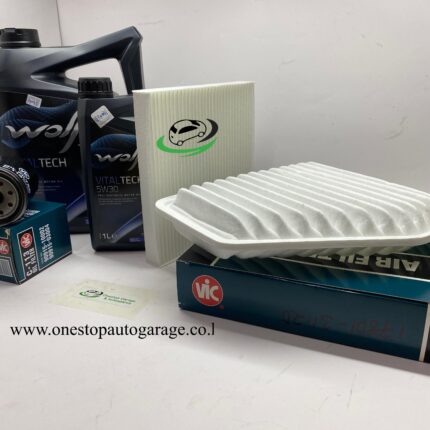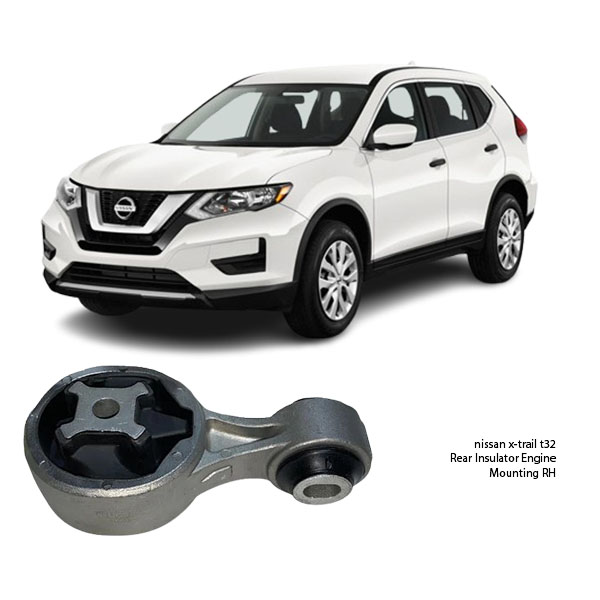-11%
Get Nissan X-Trail T32 Rear Insulator Engine Mounting RH 11350-4ba0a in Kenya
The rear insulator engine mounting (RH), also known as the rear engine mount or right-hand engine mount insulator, is an essential part of a vehicle’s powertrain system. This component plays a crucial role in supporting the engine and transmission, absorbing vibrations, and maintaining vehicle stability. Proper understanding of its function, construction, benefits, maintenance, and potential issues is critical for both automotive professionals and vehicle owners. In this 1000-word guide, we’ll explore the intricacies of the rear insulator engine mounting, specifically the right-hand side (RH).
1. What is a Rear Insulator Engine Mounting (RH)?
An engine mounting insulator is a component that secures the engine and transmission to the vehicle’s chassis, minimizing engine movement and vibrations. The “rear” refers to its position relative to the engine, and the “right-hand” (RH) indicates that it is located on the right side of the engine bay, from the driver’s perspective.
In modern vehicles, there are typically multiple engine mounts, and the rear insulator mount is one of them, positioned toward the rear and designed to provide additional support to the engine. The rear insulator engine mount is critical in reducing vibrations, noise, and movement of the engine during acceleration, braking, and turns.
2. Construction of the Rear Insulator Engine Mounting (RH)
The rear insulator engine mounting is made up of several key components:
- Metal Brackets: The mounting includes metal brackets, often made of steel or aluminum, that physically attach the engine and transmission to the vehicle’s subframe or chassis.
- Rubber or Elastomer Insulator: Sandwiched between the metal components is a thick rubber or elastomer material that acts as a cushion, absorbing vibrations from the engine and preventing them from being transmitted to the chassis.
- Hydraulic Fluid Chamber (in some mounts): Many modern mounts are hydraulic engine mounts, containing a fluid chamber that helps absorb additional vibrations and shocks.
- Bolts and Fasteners: The engine mount is secured to the engine and the vehicle frame using high-strength bolts and fasteners.
The rubber insulator is the most important part of the mount, as it provides the primary damping effect, reducing the transfer of noise and vibration. The quality and design of this rubber or elastomer material determine how well the mount isolates the vibrations.
3. Functionality and Role in Vehicle Operation
The rear insulator engine mount serves multiple essential functions in a vehicle:
- Support: It helps to hold the engine and transmission securely in place. Without proper mounting, the engine could shift or tilt during driving, causing potential damage to various components.
- Vibration and Noise Reduction: The primary function of the insulator is to absorb engine vibrations. When the engine runs, it creates continuous vibrations due to the combustion process. The rubber or hydraulic material dampens these vibrations, preventing them from reaching the vehicle’s cabin.
- Minimizing Engine Movement: When accelerating, braking, or taking turns, the engine experiences forces that could cause it to move. The rear engine mount insulator helps to keep the engine in place, reducing excessive movement.
- Transmission of Torque: The engine mount allows the engine to transmit torque to the drivetrain without moving excessively. If the mount were loose or damaged, the engine might shift under torque, leading to poor handling or potential damage.
By performing these functions, the rear insulator engine mount contributes to a smooth, comfortable ride and ensures that the engine and transmission work efficiently without excess strain on other components.
4. Types of Engine Mounts (Including Rear Insulator Mounts)
There are various types of engine mounts, with the rear insulator engine mount being one of the most critical in vehicles equipped with transverse engines or front-wheel-drive layouts. The most common types of mounts include:
- Rubber Engine Mounts: These mounts use thick rubber pads to absorb vibration. They are simple, effective, and commonly used in older vehicles.
- Hydraulic Engine Mounts: These mounts are filled with hydraulic fluid, providing a greater ability to absorb engine vibrations. They are more commonly found in modern vehicles due to their superior damping capabilities.
- Active Engine Mounts: Some high-end vehicles are equipped with electronically controlled active engine mounts that can adapt to driving conditions and engine load to minimize vibrations dynamically.
For the rear insulator engine mount (RH), it can be either a rubber or hydraulic mount depending on the vehicle model.
5. Signs of a Worn or Failing Rear Insulator Engine Mount
A failing rear engine mount can lead to several symptoms, which may affect the overall performance and comfort of your vehicle. Common signs of a worn or damaged rear insulator engine mounting include:
- Increased Vibrations: One of the first signs of a bad engine mount is excessive vibrations felt in the cabin. As the rubber or hydraulic fluid wears out, the mount loses its ability to absorb vibrations.
- Clunking or Banging Noises: If the mount is severely worn or broken, you may hear clunking or banging noises when accelerating, braking, or going over bumps. This noise comes from the engine moving excessively and contacting other components.
- Engine Movement: A failing mount may allow the engine to move excessively, causing visible shifts or tilts, especially when the vehicle is idling or accelerating.
- Misaligned Drivetrain: If the rear engine mount fails, the engine may become misaligned, leading to transmission issues or even damage to the driveshaft or other drivetrain components.
- Rough Idling: A failing mount may cause the vehicle to idle roughly due to increased engine movement and vibrations.
6. Importance of Proper Maintenance and Replacement
While engine mounts are generally designed to last for many years, they can wear out due to exposure to extreme heat, engine stress, and vibrations over time. Here are some key points regarding maintenance and replacement:
- Regular Inspections: During routine vehicle inspections, check for any signs of wear or damage to the engine mounts. If you notice any of the symptoms mentioned above, it’s essential to inspect the rear insulator engine mount.
- Timely Replacement: A worn-out mount should be replaced as soon as possible to prevent further damage to the engine or transmission. Replacing a faulty engine mount can restore the smoothness and comfort of the ride.
- Use OEM Parts: When replacing an engine mount, it’s important to use original equipment manufacturer (OEM) parts or high-quality aftermarket mounts designed specifically for your vehicle. Proper fitment is crucial for optimal performance.
7. Benefits of a Well-Functioning Rear Insulator Engine Mount (RH)
A properly functioning rear insulator engine mount provides several key benefits:
- Smooth Ride Quality: By effectively dampening engine vibrations, the mount ensures a smoother ride for passengers.
- Enhanced Engine Longevity: Properly secured and supported engines experience less wear, reducing the risk of damage to engine components.
- Improved Vehicle Stability: A stable engine improves vehicle handling and stability, particularly during acceleration, braking, and cornering.
- Reduced Noise Levels: Engine noise is kept to a minimum, contributing to a quieter and more comfortable driving experience.
8. Conclusion
The rear insulator engine mounting (RH) is a vital component that ensures the stability, comfort, and performance of your vehicle. It supports the engine, reduces vibrations, and minimizes excessive movement. Understanding its functionality, maintenance needs, and the symptoms of failure can help you avoid costly repairs and maintain a smoother driving experience. Regular inspection and timely replacement of a failing mount are crucial for vehicle longevity and optimal performance. Whether you’re a professional in the automotive industry or a vehicle owner, a well-maintained rear engine mount ensures safer and more enjoyable rides.
Follow us on Facebook for more parts.



